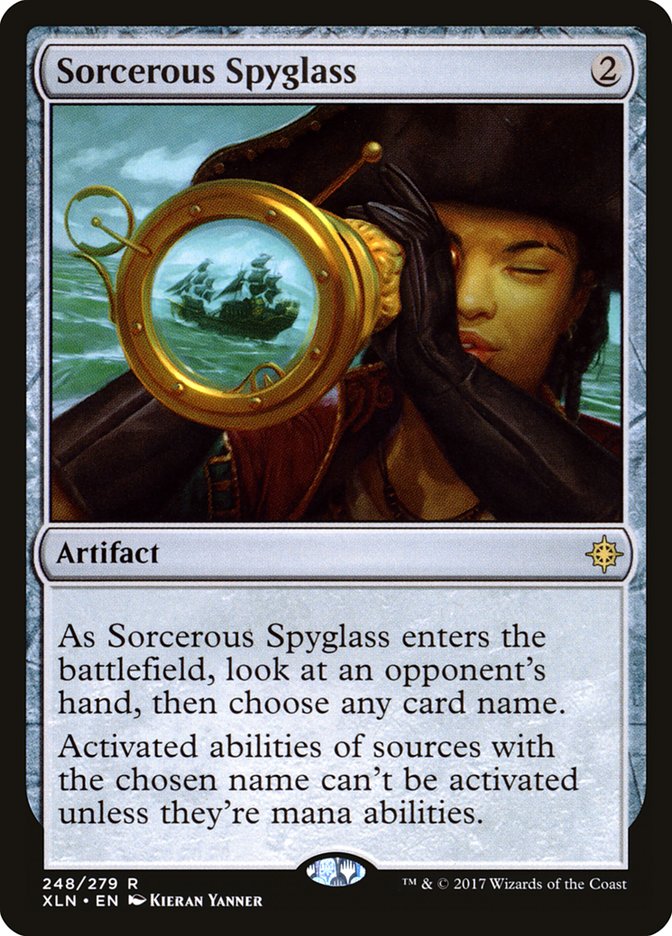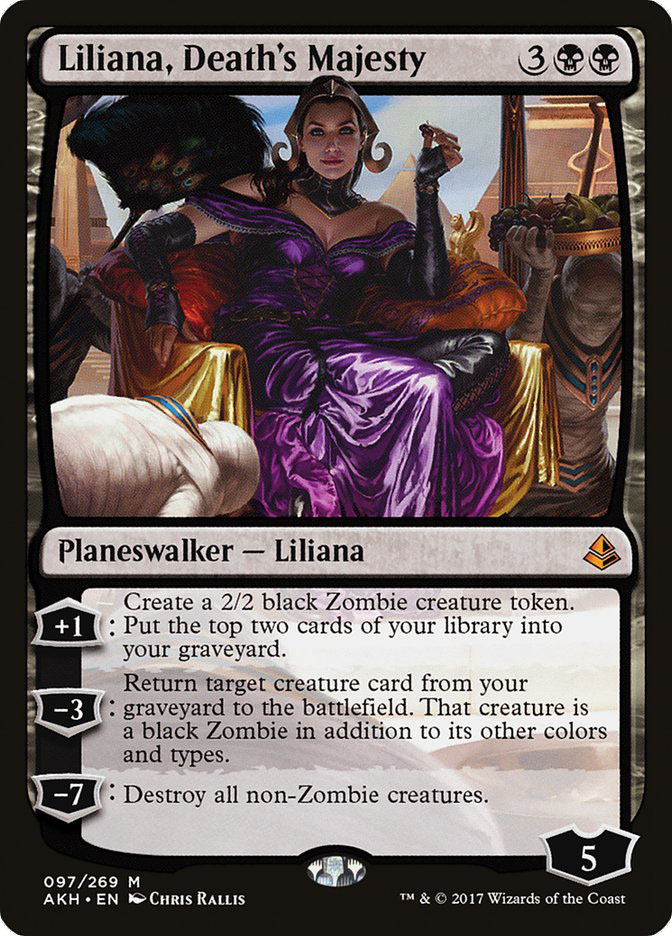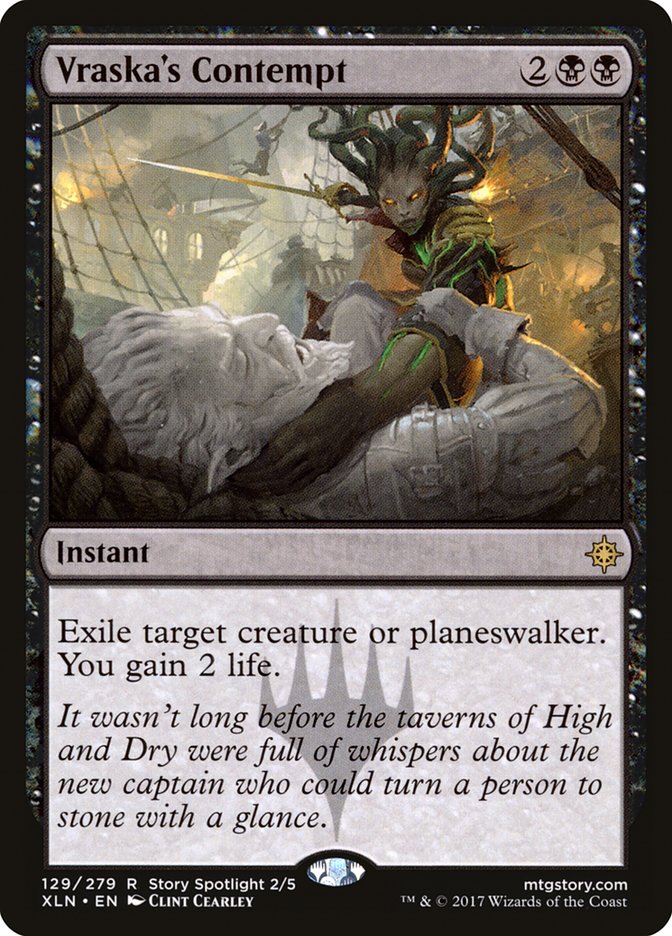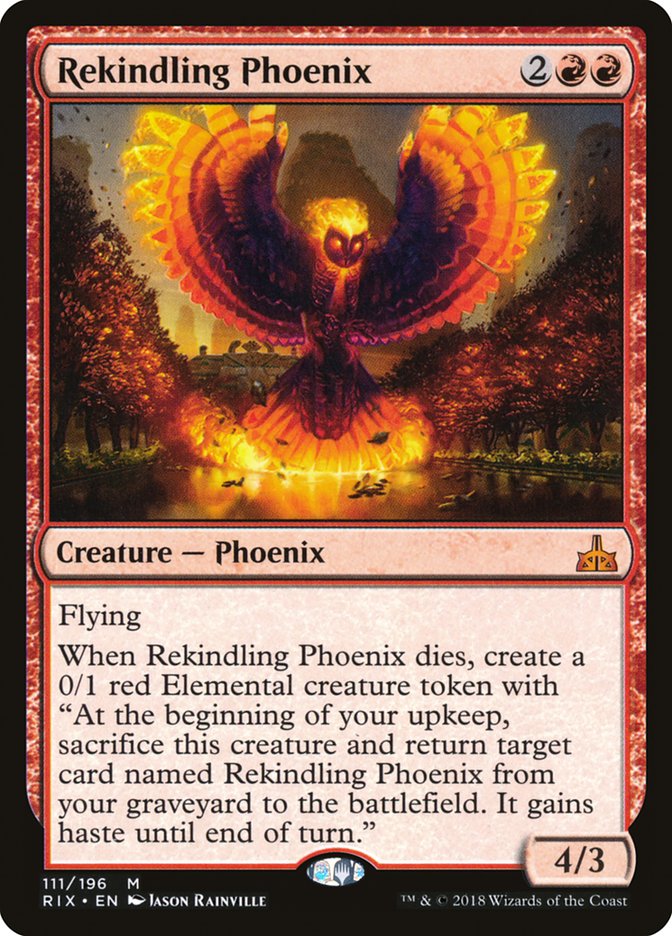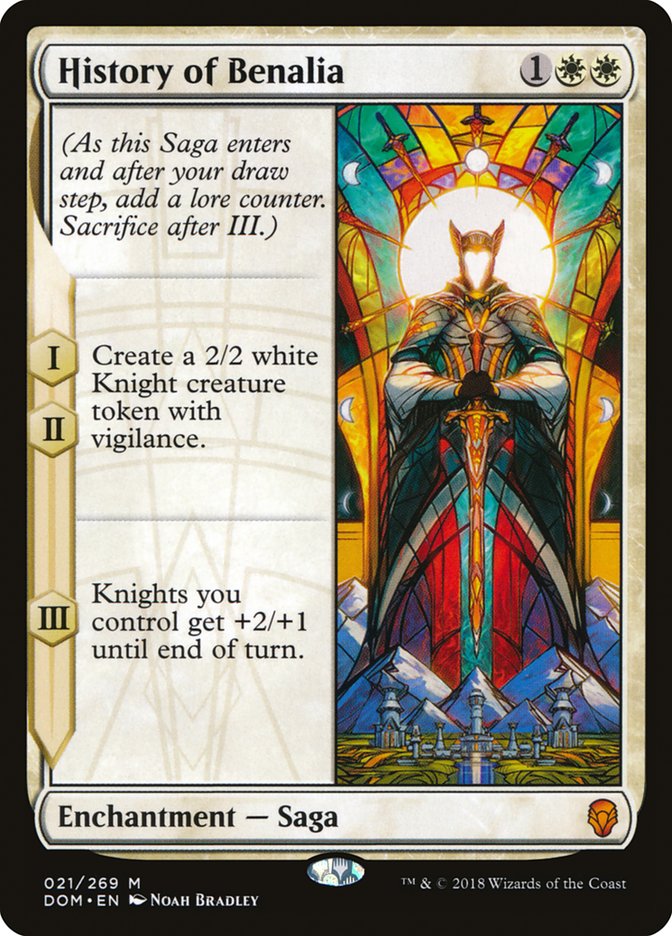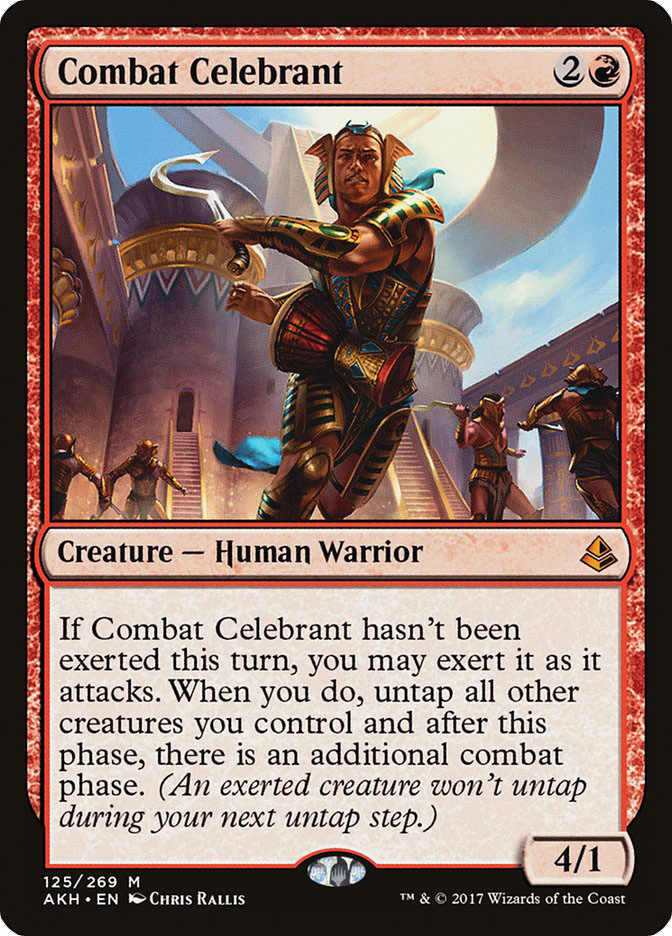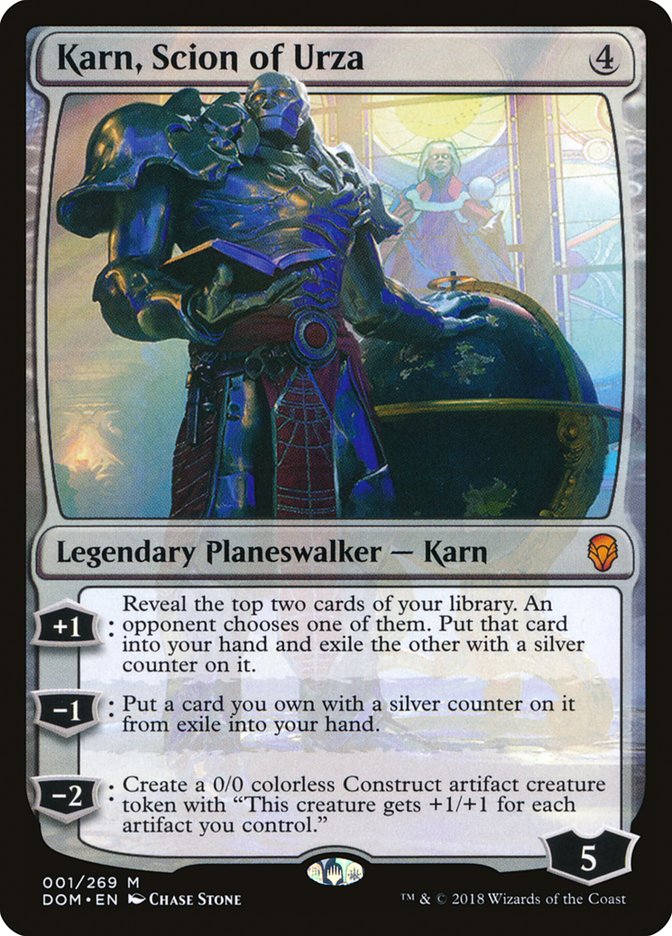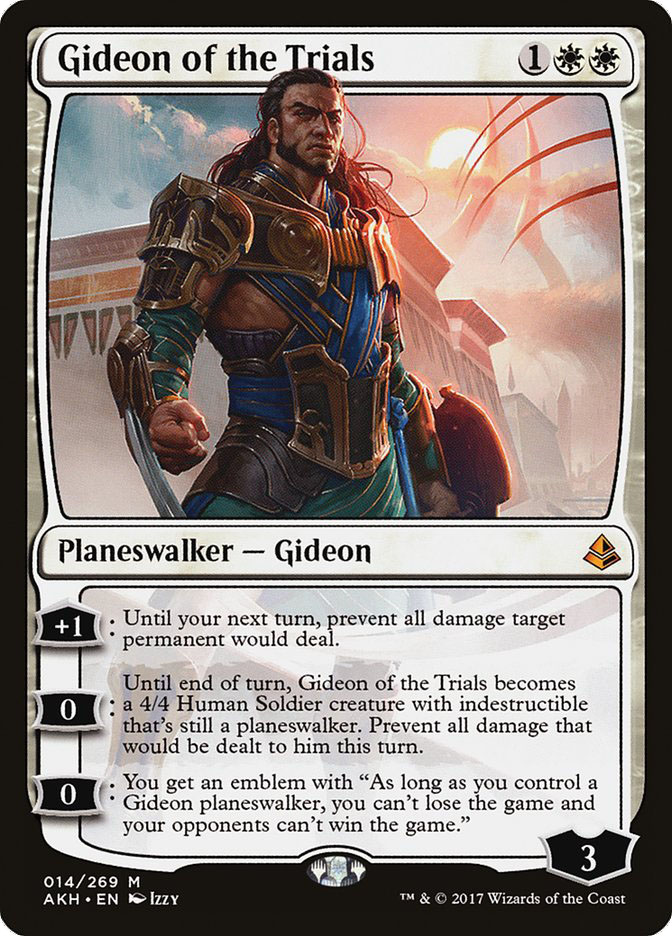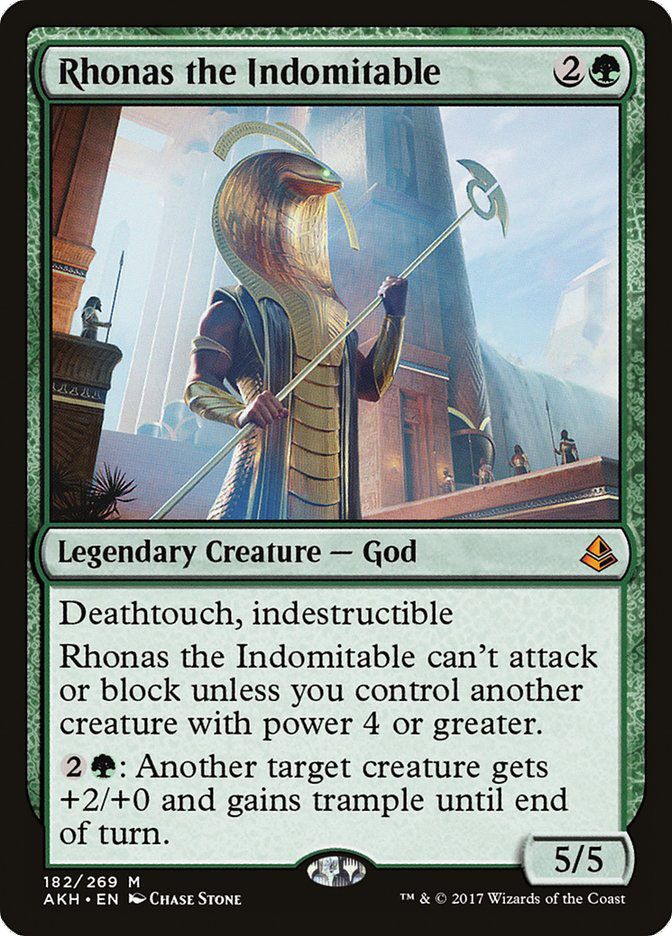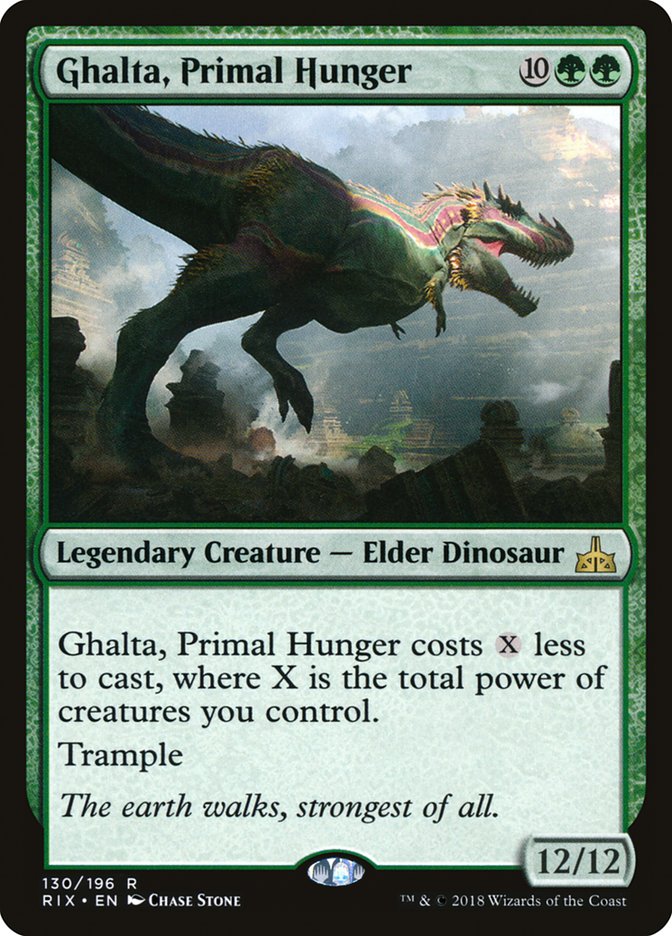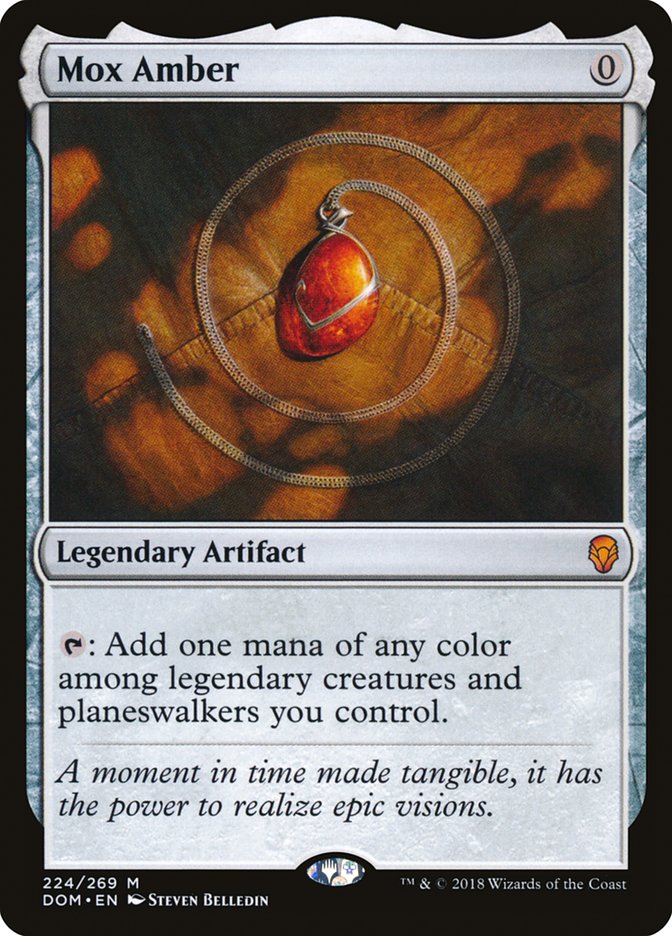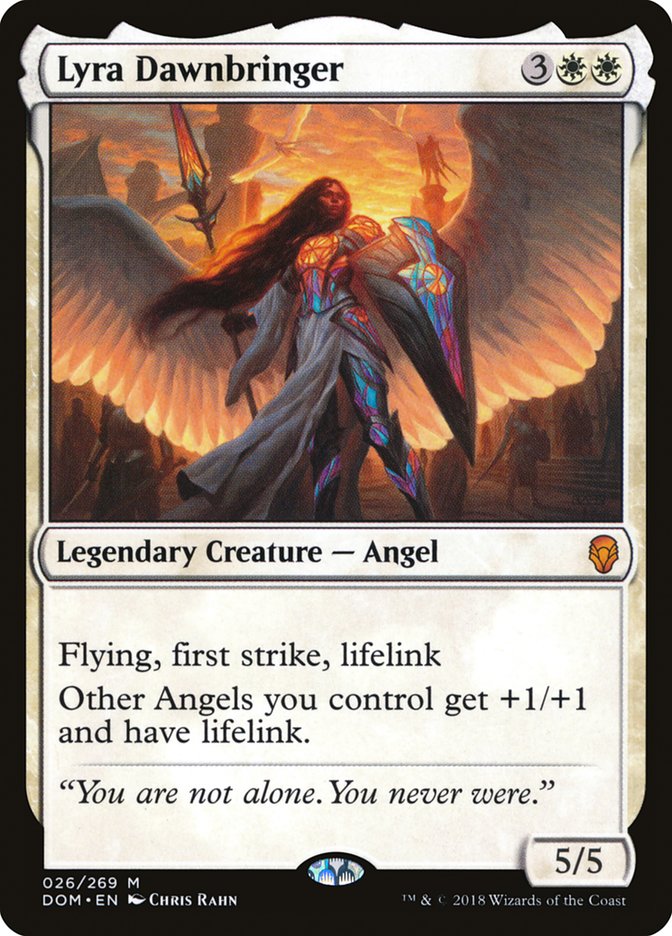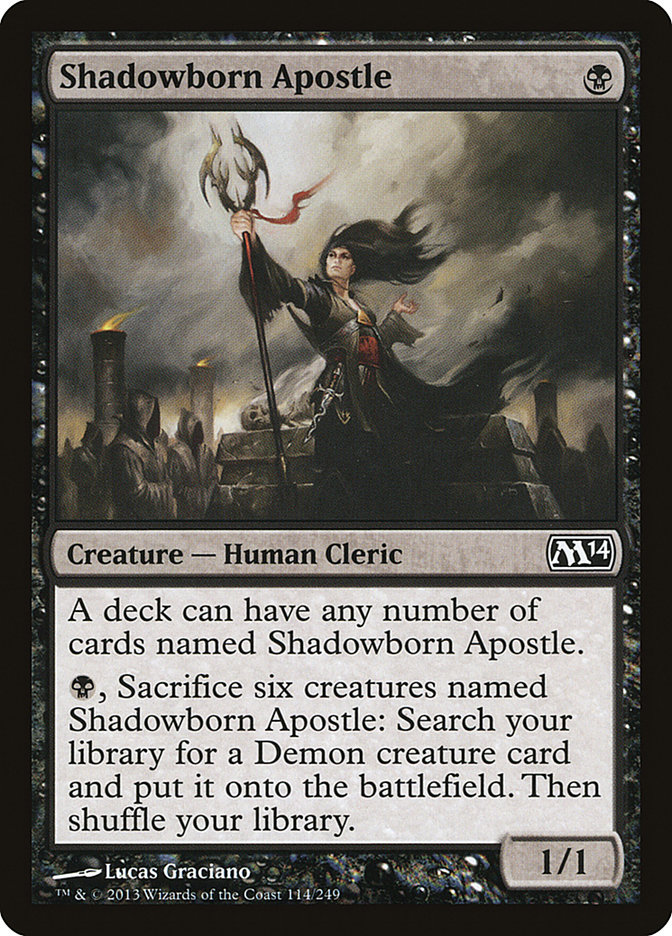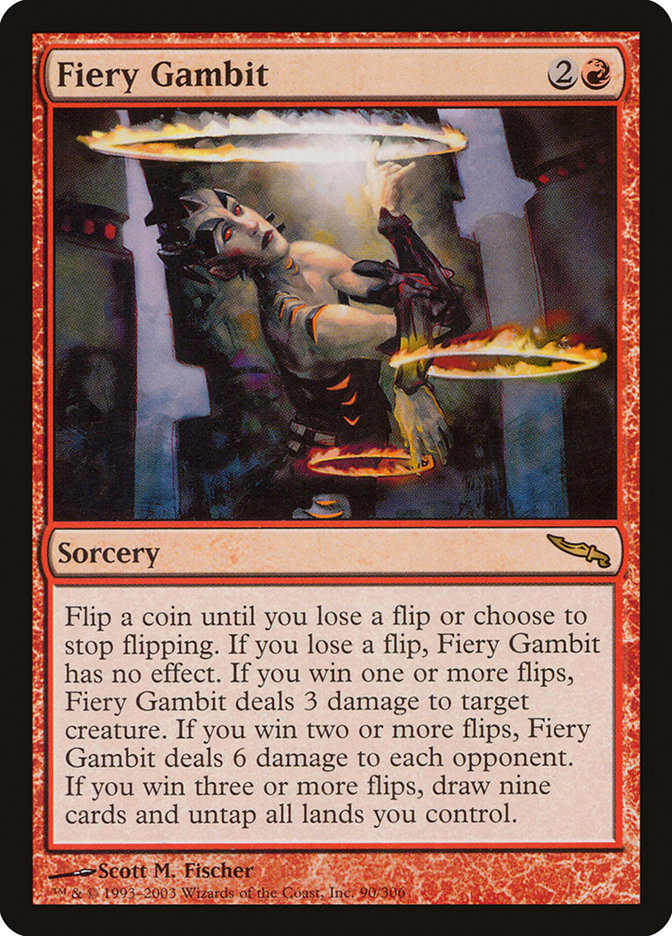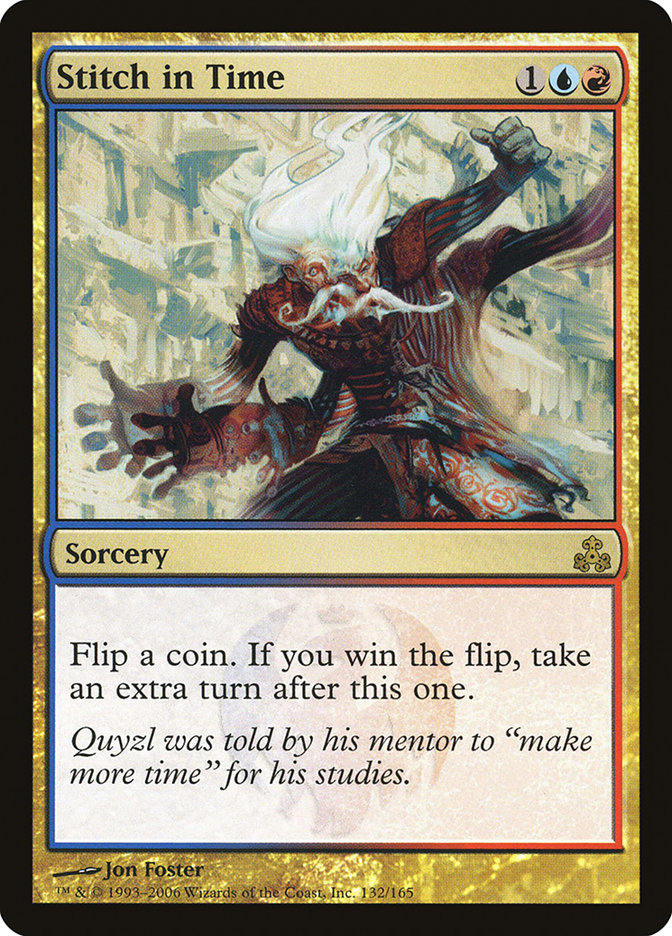Ah, there’s nothing like a Pro Tour to shake up a format-and Pro Tour Dominaria was no exception, introducing the world to the raw power
of unheralded cards like Goblin Chainwhirler, Chandra, Torch of Defiance,
Goblin Chainwhirler, The Scarab God, Goblin Chainwhirler, Teferi, Hero of
Dominaria, Goblin Chainwhirler…wait, we already knew about all of these
cards!
Part of the problem can be blamed on the scheduling change that pushed Pro
Tours back until they’re six weeks after the release of a new set instead
of two. While it was possible for some of the testing teams to keep their
strategies secret in the past, it’s a heck of a lot harder to do that now
that we’ve all got a month and a half to figure out the format.
The other problem is more unique to this particular Standard environment,
where the format is still being warped around a couple of absurd cards that
lap the field in terms of power level. Since most of those cards are in Amonkhet and Kaladesh, the format has tended to snap back
toward cards like The Scarab God and Chandra, Torch of Defiance whenever
possible. Dominaria is starting to feel like a bit of a top-heavy
set as well, with a handful of cards like Teferi, Hero of Dominaria, Karn,
Scion of Urza, and Goblin Chainwhirler appearing to do more work than the
rest of the set combined.
The upshot is a top 8 that can only be described as Chainwhirler-centric,
with four R/B Aggro decks (each featuring four Goblin Chainwhirler), a R/B
Midrange deck (featuring four Goblin Chainwhirler), and two Mono-Red Aggro
decks (guess which card has three red mana symbols in its casting cost?)
Ernest Lim Pei Jin was the only outlier, piloting an Esper Control brew
into the top 8 that featured such underdogs as The Scarab God and Teferi,
Hero of Dominaria. Woof.
Not only is this extreme lack of Top 8 diversity going to keep the price
movement muted in the wake of Pro Tour Dominaria, the upcoming
format rotation should also keep prices in check over the next couple of
weeks. Some of Kaladesh and Amonkhet‘s best cards had a
killer weekend, but they’re only going to be legal for another three and a
half months. That’s going to discourage a lot of the more value-conscious
players from buying into a whole new deck-a problem that doesn’t affect
post-Pro Tour hype in, say, mid-October. In fact, we’re not far off from
the late July and early August doldrums where Standard cards tend to hit
their seasonal nadir regardless.
This doesn’t mean that we should ignore the Pro Tour. They’re going to be
some quick flip opportunities, of course, as well as a chance to see which
cards have proven themselves to be powerful on the biggest stage in Magic.
So let’s take a look at the top ten biggest financial winners and losers
from Pro Tour Dominaria. Which cards should you buy? Which should
you sell? Let’s find out.
The Eight Biggest Winners
Yeah, there weren’t a ton of “winners” from the Pro Tour if we’re actually
discussing this thing. Sorcerous Spyglass is a great sideboard card, and
in the week before Richmond I was starting to see more and more players
start moving this into their main decks. This trend continued on Day One,
and the card actually looked pretty good on camera.
The only problem? U/G Karn was the deck that pulled this trick the most,
and it had a terrible Day Two conversion percentage. I still like
Sorcerous Spyglass in the metagame right now, but the card had the chance
to be a sweet Pro Tour breakout and that just didn’t really happen.
Womp-womp.
This is more of a punt than a true victory, as most of the decks featuring
Teferi, Hero of Dominaria went down in flames. Teferi himself looked
fantastic, though, and more people are also getting clued in on the fact
that Teferi is also pretty good in Modern.
Regardless, not everybody is going to build and play some flavor of red or
R/B Aggro, and if you want to play control right now, Teferi is the best
game in town. The Pro Tour won’t cause the U/W planeswalker to soar to new
heights, but it did validate Teferi as a tier one threat. Expect price
stability for the foreseeable future.
Liliana, Death’s Majesty has been spiking a bit on Magic Online over the
past 48 hours, mostly due to Willy Edel’s Mono-Black Control deck tech.
Even though Edel didn’t make Top 8, his deck was one of the top performing
Standard decks at the event, and I imagine that a lot of people are going
to start sleeving it up. Liliana is also an important part of some of the
B/G Constrictor builds that had a decent weekend, and it’s used in some U/B
and Esper Control shells as well.
While Liliana, Death’s Majesty is going to rotate in the fall, its price
should be a lot closer to $20 than $10 right now based on the amount of
play it sees and the amount of demand that I’m expecting. If you’ve been
hoping to snag one of these on the cheap, your window is rapidly closing.
5.) The Scarab God
Winner of the “forgot about Dre” award, The Scarab God came roaring back in
a big way at Pro Tour Dominaria. The Esper Control deck that made
Top 8 ran three copies of the powerful God, and U/B Control seemed to
outperform U/W Control all weekend long. Believe me, I’m as sick of The
Scarab God versus Red Aggro matchups as you are, but that doesn’t negate
just how powerful this card is. Did you really believe it would be hated
out of the metagame for good?
If The Scarab God weren’t about to rotate, I’d be predicting a trip back up
past the $30 mark. Instead, I suspect that it’ll see a brief surge toward
$30 before settling in around $25. This is probably the last best chance
for you to move your Scarab Gods into actual demand before rotation if you
aren’t planning to play U/B or Esper Control between now in mid-September,
though you might not need to rush. While I expect the Standard index to
drop a bit going forward, I don’t think that The Scarab God’s performance
at the Pro Tour was a fluke. This thing is going to be good again for a
while.
It won’t be talked about much in the wake of this Pro Tour, but Vraska’s
Contempt is slowly creeping up again, both on MTGO and paper. Now that
black is starting to see a lot more play again, especially in control
shells, demand is going to rise for one of the best removal spells in the
format. Vraska’s Contempt probably doesn’t belong above The Scarab God on
this list, but I wanted to highlight it since it’s not going to be rotating
in the fall unlike the last couple of cards on this list. There’s not going
to be enough of a gain to warrant a quick-flip or anything, but it’s a
solid buy both short-term and with September in mind.
3.) Chandra, Torch of Defiance
We’re going to end this list with three straight red cards, so buckle the
heck up!
Chandra, Torch of Defiance doesn’t seem to grab the headlines anymore, but
this powerful planeswalker is a huge reason why these aggressive red decks
can stick around and tangle with all of the control nonsense that might
otherwise have a shot at drowning them in card advantage. It’s also part of
why I’m hoping that the Goblin Chainwhirler problem will fix itself after
Chandra leaves the format. For now, though, these two are a pretty
unstoppable duo.
From a financial perspective, Chandra’s ceiling is limited by the fact that
she’s in one of the Challenger Decks as well as the fact that she’s about
to leave the format for good. I like this spec a lot more on MTGO, where
rotational economics don’t come into play until later and the Challenger
Decks weren’t released at all. In paper, I think Chandra has a little room
to grow, but I wouldn’t want to be holding for long. The card is likely to
peak at some point this week and then slowly start to drop.
R/B Aggro, Mono-Red Aggro, and R/B Midrange took seven of the Top 8 slots
between them. All seven of those decks ran Rekindling Phoenix, a small set
mythic rare that’s proven itself in many other contexts and isn’t going to
rotate for another year. Oh-and unlike the number one card on our list,
Rekindling Phoenix hasn’t started to spike. Yet.
While I hesitate to recommend buying any Standard cards on the cusp of the
summer doldrums, Rekindling Phoenix might be an exception. Since it’s flown
a bit below the speculation radar during this Pro Tour despite being one of
the most important cards in most of the format’s best decks, it might not
actually peak for another week or so. Even better, it’s a powerful and
versatile enough card that I suspect we’ll still be talking about it a year
from now regardless of how the format evolves. That’s a level of safety
that I like in my short-term flip targets.
Could it really be anything else? Goblin Chainwhirler was the defining card
of the Pro Tour, and you’re going to need a playset of these if you’re
going to play anything with red in its casting cost for the foreseeable
future. Here’s hoping you bought a bunch back when I recommended it at $2.
Regardless, this one’s probably heading into the $10-$12 range over the
short term. It would hit $15+ if this were a slightly more exciting Pro
Tour, or if we were further from rotation, or if it weren’t a red aggro
rare-for some reason, those always lag behind control cards regardless of
how good the format is. Also, it might have been a little too
dominant-there’s going to be a lot of “ban Chainwhirler!” chatter over the
next week or so.
Regardless, like most Pro Tour-defining cards, Goblin Chainwhirler will
probably peak in value tomorrow and start to slowly fall off after that.
Even though Chainwhirler will likely remain a pillar of the metagame going
forward, selling into the hype is correct here. After all, at what other
point could this card ever prove itself more than it just did? I might be
interested in buying in for the fall once the hype dies down in August or
so, but right now I’m all about selling my Chainwhirlers.
The Eight Biggest Losers
Is this card the least-bad loser? The least-good winner? I don’t really
know, to be honest. Esper Benalia had an awesome weekend, but there were
only seven pilots of that deck. W/B Aggro had a terrible weekend with 29
pilots. I tried to write a joke for this paragraph about the band Twenty
One pilots, but it didn’t land.
My guess is that this card drops a bit from here because white just isn’t
as good as it seemed a couple of weeks ago. History of Benalia is still a
powerful card that’s going to do awesome things in the future, but I’m
starting to see this card taking a bit of a dip on MTGO which doesn’t bode
super well for the paper price. Let’s call it a soft sell for now.
7.) Combat Celebrant
Remember this guy? Remember how U/R God-Pharaoh’s Gift was going to be a
good deck even after Dominaria came out? Yeah, that…didn’t so much
happen.
Combat Celebrant is a great example of when it’s correct to sell low on a
card. Current retail is $5, which is a far cry from the $12-$15 that it
briefly hit back in mid-April. $5 is still not bulk mythic pricing, though,
which is exactly where this card should be right now. If you can get
anything above bulk mythic value for your copies, ditch them ASAP.
If you only watched the first day of Pro Tour coverage, you probably would
have walked away believing that Karn was the most important card in the
format. If you only watched the second or third day, you might not have
thought much about Karn at all.
At some Pro Tours, this would be damning evidence of Karn’s inability to
come through in the clutch. At Pro Tour Dominaria…I’m not so sure.
Only so many red and black cards can really be “winners,” and it’s clear
that the pro community still loves and respects Karn based on how many
people showed up with him in their decks. The price might dip in the
immediate wake of the event, but we’ll be talking about Karn in tier one
Standard decks for the next two years.
The problem is that Karn was incredibly expensive to begin with, and
everybody loves a good narrative. The fact that I’m already starting to see
signs that Karn is on its way down tells me that this card’s price is
likely to keep dropping from here on out, at least for a couple of weeks.
I’m not selling my personal copies, but I’m going to sell my spares and
attempt to buy back in during the dog days of summer.
Gideon of the Trials spiked from $10 to $30 a few weeks back, but that
seems like a lifetime ago. The planeswalker is in free-fall on MTGO right
now, and I expect its paper price to follow suit. Gideon’s best deck is W/B
Aggro, which had an atrocious Day Two conversion percentage and feels
poorly placed in the metagame right now. Gideon isn’t a total loss-some of
the U/W Control shells run a couple of copies, and he still sees a little
bit of play in Modern-but there’s no way that he’s worth his current $25
price tag, especially not with rotation about to arrive.
4. & 3.) Rhonas the Indomitable & Ghalta, Primal Hunger
I could have put Steel Leaf Champion in this slot too, but I’ll stick with
the mythic that’s selling for about $20 despite being three months away
from rotation as well as the big dumb Dinosaur that’s selling for $9
despite the fact that it only sees play in one mediocre deck.
Mono-Green Aggro was a surprise contender on Day One, but it had one of the
worse Day Two conversion percentages and was essentially a non-factor from
there. I can’t imagine too many people deciding to pick this deck up right
now, which means that these two cards are going to start dropping off
pretty hard.
2.) Mox Amber
If Mox Amber were going to break out in this particular Standard
environment, this would have been the place and time. Instead, Mox Amber
was simply nowhere to be seen. Since the card hasn’t managed to do anything
in Legacy or Modern either, it might finally be time to label this one a
good ol’ fashioned bust.
Of course, today’s busts are tomorrow’s best speculation targets. Mox Amber
is about a $15 card in paper right now, but it’s under $4 on MTGO. I’m
hoping to wait this one out until it’s in the $5-$6 range in paper and then
I’m going to snap up a whole bunch of them. While I highly doubt that Mox
Amber is going to do anything in Standard at any point, it’s the sort of
card that’s going to spike in a hurry the moment someone even manages to
spike a single obscure Modern tournament with it. Over the short term,
however, I expect that this card’s going to take a pretty big tumble.
1.) Lyra Dawnbringer
At least Mox Amber had the decency of being a no-show from the start. Lyra
Dawnbringer looked like the absolute truth on week one of Dominaria Standard…and then, crickets.
I’m still a long-term believer in Lyra, and I suspect that she might be
among the biggest risers come September depending on what the fall set
gives us. Until then, however, I don’t see a lot of hope for this card.
Lyra’s price is already below six tickets on MTGO, and I expect it to
settle in around $11 or $12 in paper.
This Week’s Trends
-
The Modern index has been quiet this week as the community focuses
on Standard and Battlebond. Hall of the Bandit Lord jumped
a little more due to that sweet new combo deck, and Affinity
staples like Mox Opal and Arcbound Ravager are slowly making gains
as well. -
Meanwhile, Jace, the Mind Sculptor continues to slowly drop as the
format continues to evolve. It’s sure starting to seem like I was
wrong about Jace warping the metagame-heck, Jeskai Control is the
most popular deck in the format right now and some of those builds
don’t even run Jace-they opt for Teferi, Hero of Dominaria instead.
I still feel like Jace is going to see enough play to maintain a
$50+ price tag, and its value will likely blow up if it ever does
start to dominate since they just reprinted it a few months ago so
it’s probably not going to show up in the next Masters set. I don’t
blame anyone who wants to cash out, though. Regardless of what
happens to this card’s eventual price tag, it’s likely to keep
dropping in value before any sort of rebound occurs.
-
The biggest casual news of the week as the rise of Shadowborn
Apostle, the Magic 2014 common that had been flat in the
$2 range for over a year. The Command Zone podcast featured a
Shadowborn Apostle deck last week, though, and it performed
incredibly well. As a result, the card is spiking toward $6-not bad
for a common that’s just five years old! -
Also up big this week thanks to that deck? Thrumming Stone. After jumping
from $8 to $20 a few weeks back thanks to Rat Colony, you simply can’t find
this card for less than $30 right now. The supply is small enough here that
the price could end up over $40 for the short-term, but don’t forget that
this one will probably show up in a casual product at some point. Ripple is
a tough mechanic to reprint, but I have faith that they’ll get around to
this specific card soon enough. -
Honestly, I’m selling both of these cards into the spike-and hard. Like
most of the Saffron Olive spikes, the demand here is legitimate but
limited. Once people move on to the next shiny toy-something in Battlebond, probably-the price will start to drop again. Dig your
Apostles out and get them listed ASAP. -
Speaking of Battlebond, I hope you bought your Fiery
Gambits last week when I told you to. The card jumped from $3 to
$10 thanks to the new coin-flip commanders, I don’t see it falling
below $8 or $9 until it’s reprinted. The other coin flip cards are
going to continue doing well for the next couple of weeks as more
and more people decide to build this deck. Next up? Stitch in Time,
which has already started to climb a little.
-
Over in reserved list land, things are still popping off. Dual
Lands are still soaring, as are second tier spec targets like
Peacekeeper, Thawing Glaciers, and Ydwen Efreet. Non-reserved list
cards from Revised and Unlimited save started to
jump as well, like Crusade, Serra Angel, and Psionic Blast. At this
point, you should probably just snap up everything from that era
that you think you’re ever going to want, reserved list or not. -
Lastly, there was big-ish news in the world of MTG: Arena. After
weeks of community complaints about the economy being super
frustrating, WotC released a long-promised update to the economy,
which can essentially be summed up as a massive shrug.
More specifically, the issue here is that Arena is fantastic for a couple
of hours when you first fire it up, and it’s fantastic if you’re willing to
dump a few hundred dollars into filling out your collection. For anyone
trying play the game for an hour or two every day, trying to grind their
way to a competitive deck without paying in, Arena is a deeply frustrating
experience. The grind is worse than other freemium games, and WotC is being
very cagy about whether they’re going to improve this experience at all.
The big unspoken issue here, I believe, is that WotC does not want to
devalue cards across their other platforms. While a Hearthstone card only
exists in Hearthstone, an Arena card exists on MTGO and in paper. If you
can easily grind to a tier one Standard deck on Arena, why play Standard on
MTGO? Why drop $250 on paper cards that are going to rotate? Why not save
your dough and just play Arena? In order to prevent that, WotC is going to
be very careful about how easy it is to grind on Arena.
On the flip side, however, why would anyone drop $200 on an Arena deck when
it costs the same to buy that deck in either paper or on MTGO-you know, the
platforms where your cards are re-sellable? Arena has a sweet interface,
but it’s not that much better than MTGO.
So we’re in a standoff. F2P players want Arena to be less grindy, and WotC
can only do so much without risking the collapse of their two established
cash cows. I still expect them to find some happy medium eventually, but
there are liable to be a lot of frustrated Arena players in the meantime.




